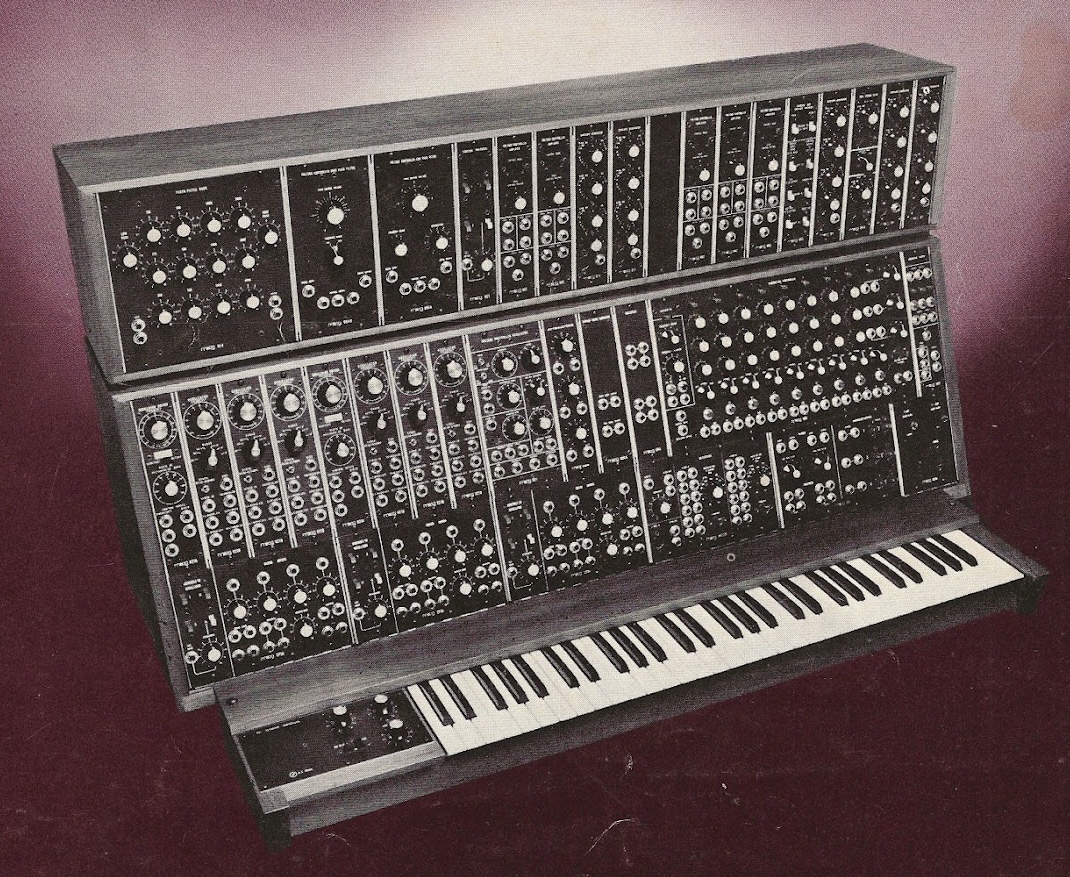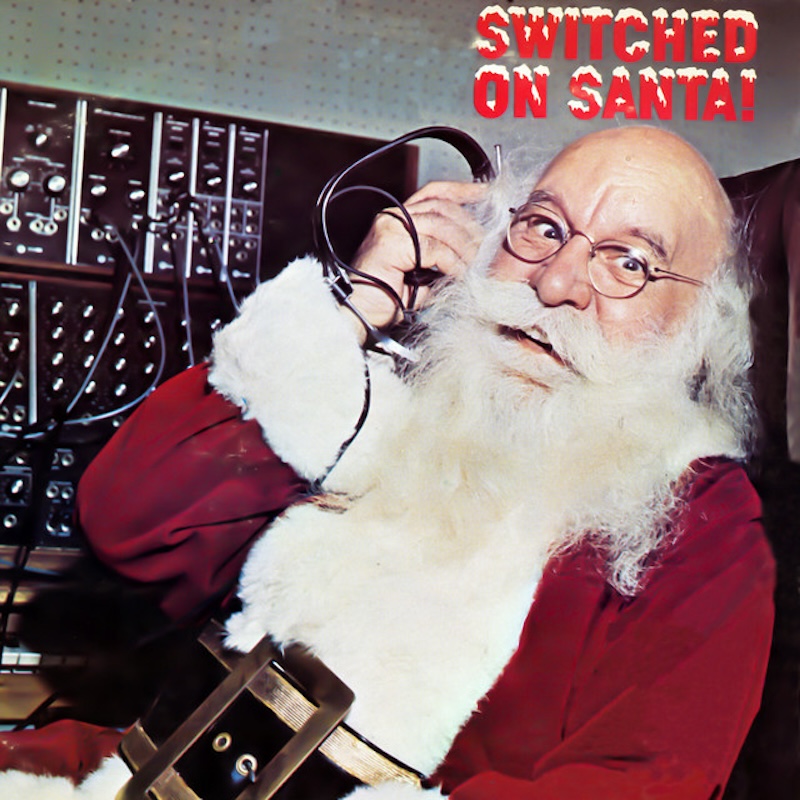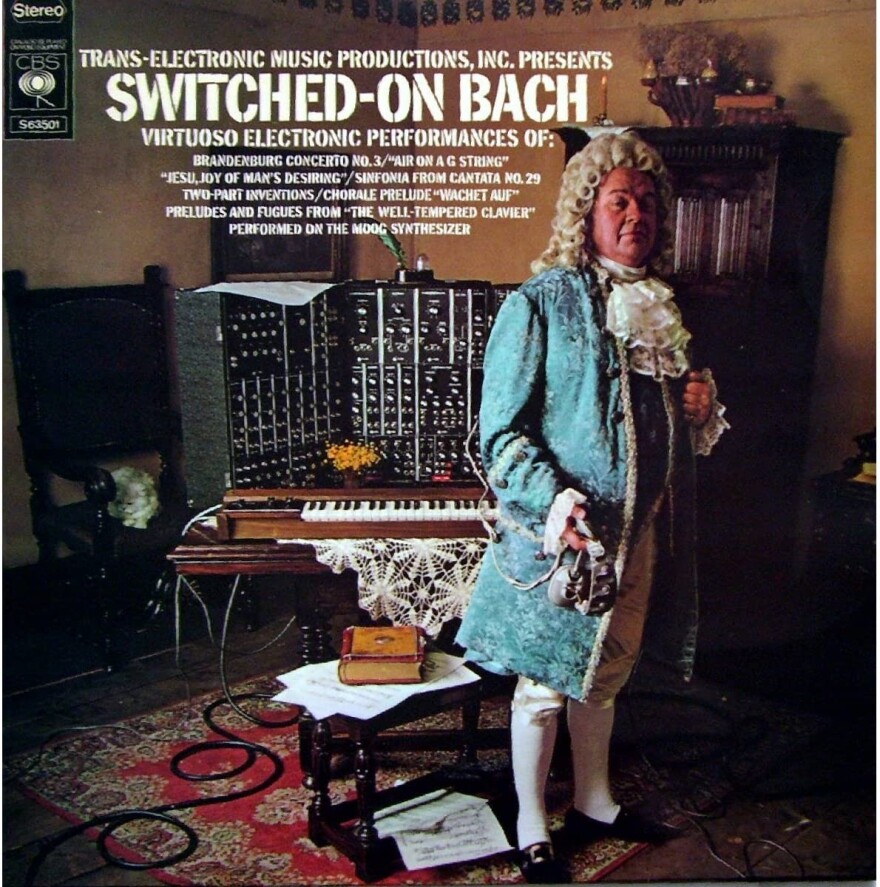In 1964, the first Moog Modular Synthesizer was shown publicly—launching the Moog legacy. The company name and its internal structure has changed a number of times since its genesis in 1954…but Moog's ppriority has always been creating instruments that give the artist the tools they need to create work “between discovery and witnessing.”
The Moog synthesizer disrupted the market, and in fact carved out its own completely new niche in the world of professional audio equipment and musical instruments. With voltage control and transistor-based circuitry, it presented a completely new approach to creating electronic music. And, unlike its predecessors (many of which were borne from government research projects or universities), it was something that was actually marketed and could, for the right sum, be purchased by anyone. The Moog’s tonal qualities, playability, and open-ended, high-tech design quickly established it as a standard for electronic sound—even in popular music.
The Moog synthesizer was quickly embraced by record labels who wanted to create jingles, sound effects, library music, and other media assets. Record labels, universities, and well-funded artists were some of the few lucky enough to use a Moog in its early years. While music houses of the time saw the Moog as a means to streamline advertising workflows, early Moog masters saw the synthesizer as a beautiful possibility for the future.

[Above: image from a period brochure for the Moog Synthesizer 55—a "total studio system with complete synthesizer functions."]
The future, of course, came with a price tag. Despite being a fraction of the cost of some earlier elaborate electronic composition systems, the instrument remained somewhat exclusive due to both its cost, in some cases as expensive as a car or property, and because each synth was hand made to order. Access to the instrument was scarce and usually not without invite.
The commercial appeal for synthesizers was almost immediate, and the sound was ready for use. However, outside of commercial and experimental work, the synthesizer as a melodic instrument was relatively unheard of. Finally, in 1968 Wendy Carlos released her masterpiece Switched-On Bach, cementing the Moog’s use as what many might refer to as a "real" musical instrument, capable of creating melodies, harmonies, and rhythms with precision and expressive control. The album, which arranged 12 Bach classics on the Moog Modular, is an example of precision sound design and genius instincts, using the familiar to help introduce the new.
But, outside of "legitimizing" the synthesizer to many listeners, Switched-On Bach had a number of peculiar and unexpected side effects. Its reception pushed other composers to recreate top hits with the Moog’s circuits, capturing new renditions and packaging them up for an easy sale. This trend was so prevalent that it eventually earned a name: Moogsploitation.
What is Moogsploitation?
The term "Moogsploitation" refers to albums released in the late '60s and '70s which featured the Moog synthesizer and followed the trend started by Switched-On Bach. Generally speaking, records considered part of the "Moogsploitation" craze prioritize quick consumption and instant appeal, primarily through novelty. In most cases, composers took other people’s music and made it Moog. At its worst, these records were hardly surface deep and in large supply.

Switched On Santa (1970), Chartbusting Moog (1975), Ye Olde Moog (1974), Go-Moog! (1973), Everything You Always Wanted to Hear on the Moog (But Were Afraid to Ask For) (1973), and many other tongue-in-cheek records with colorful packages were pressed worldwide. Some were fantastic—and others were not. Even so, perhaps the novelty aspect of the genre was not its greatest downfall—instead, maybe it was just that many of these records seemed to underestimating how much could be done with the Moog, and therefore may have undermined the instrument's creative potential.
The 1960s/70s records that worked, though? They were willing to push both the synthesizer and the industry around them to make room for their work.
"Moogsploitation" is often used as a "dirty word" to refer to some of the more transparently superficial releases from this period…but no doubt, there were many records which focused on the Moog and still stand up as noteworthy works in their own right. In this article, I have collected ten particularly interesting Moog-centric records from the era. These albums all have that spark which elevates what otherwise might be a novelty record into a piece of synthesizer history—and each in their own way helped bring the Moog synthesizer to the masses.
Wendy Carlos: Switched-On Bach

Wendy Carlos | Columbia Masterworks | first released 1968
Wendy Carlos is a singular composer whose work has turned on some classic pieces of cinema (see Kubrick's A Clockwork Orange) and bridged the gap between the unknown of science fiction and the reality in which we, the audience, sit.
Switched-On Bach was released on Columbia Records in 1968; by 1974, it had sold over 10 million copies, and it was awarded three Grammys in 1970. In 1986, it became only the second "classical" album to go platinum, solidifying its mass appeal.
The release of Switched-On Bach was an exciting time for synthesizer music. Carlos chose to represent the Moog synthesizer in a way that would be both recognizable to the audience and intricate enough to make the Moog’s first impression on new listeners a memorable one. Wendy worked closely with Robert Moog, and was able to test modules and offer suggestions—ultimately creating for herself the perfect tools to express her vision and set popular music in a completely new direction altogether.
Mort Garson: Mother Earth's Plantasia
Mort Garson | Homewood Records | released 1976
Arguably one of the most cherished "Moogsploitation"-adjacent records, Mother Earth’s Plantasia continues to capture new listeners thanks to Mort Garson’s intimate Moog performance which holds us in the living room of his mind. Garson was able to enter the American household not through known sound, but through something far more tangible—the objects his listeners kept.
When originally available, Plantasia was a limited release—a free item which customers claimed after buying a plant from Mother Earth, a flower shop on Melrose in Los Angeles, or a Simmons mattress from Sears. Interestingly enough, it did make for a very peaceful listen on your new Simmons mattress…but more specifically, the song structures and sounds within the album mimic those of the plants after which the album was written. Delicate melodies push and pull with filter swept breaths, each track growing at the pace of sitting room light.
Plantasia would be one of the strongest electronic offerings from Mort Garson, but cult classics like The Connection (1969), Electronic Hair Pieces (1969), Didn’t You Hear (1970), and Black Mass (1971) helped establish him not only as a prolific composer, but also continue to qualify him as an electronic music maestro to whom the Moog synthesizer opened its circuits.
Jean-Jaques Perrey: Moog Indigo
Jean-Jacques Perrey | Vanguard Records | released 1968
Jean Jacques Perrey’s Moog Indigo, a reference to Duke Ellington’s "Mood Indigo," is an extremely ambitious electronic pop record which has been sampled heavily by artists from Gang Starr, A Tribe Called Quest, Pusha T, and many more. It is a dense record with many layers of synthesizer voices, a much more modern-minded album for a 1968 release.
Perrey’s rendition of “Flight of the Bumblebee” includes musique concrète-esque tape sampling of a live beehive to play the main melody; “Gossip Perpetuo” showcases tape based vocal sampling that is just an amazing listen. The Moog performances on this album are sure to get contemporary listeners interested in the synthesizer’s massive sound.
Gil Trythall: Switched-On Nashville (Country Moog)
Gil Trythall | Athena Records | released 1972
Gil Trythall’s Switched-On Nashville follows the "Switched-On" legacy by also arranging popular classics using the Moog modular system. This hidden gem is a fantastic piece of electronic music history, boasting a top-notch collection of Nashville standards from greats like Johnny Cash and Jimmy Webb—all reimagined on the Moog.
The album was released outside of the states, and from Tennessee to New Zealand, the Moogsploitation wave was quite real. This unique piece of synth history stands out in its compelling rendition of popular music with the unknown sounds from the Moog Modular system.
Bruce Haack: The Electric Lucifer
Bruce Haack | Columbia Records | released 1970
Bruce Haack’s The Electric Lucifer bends the spectrum of easy-listening folk music and early electronic music practice. Featuring psychosonic motifs which buzz and sweep through Americana-rich melodies and drone into introspective mantra squelching writings, this album is distinctly a product of the late-1960s counterculture movement.
Bruce turns to electronics to successfully capture the breadth of his imagination and the sonic palette of this historic record, which chooses “‘power love’...to unite the world in the face of war.”
Alongside his Moog synthesizer, Haack used the "Adam I," a vocoder of his own creation—which he put together by hand for forty eight dollars—and a selection of other self-invented electronic instruments. It is not surprising that Haack was an early adopter of the Moog synthesizer; and The Electric Lucifer helped document such an exciting time in synthesizer history.
Isao Tomita: Switched On Hit & Rock + Electric Samurai: Switched on Rock
Isao Tomita | Switched On Hit & Rock | CBS/ Sony, Japan | released 1972
Isao Tomita | Electric Samurai: Switched on Rock | CBS, UK | released 1974
Similar in title and objective to Switched-On Rock (1968) by The Moog Machine, Electric Samurai: Switched On Rock (1974) was first released as Switched On Hit & Rock in 1972. It was Japanese master synthesist Isao Tomita's first electronic album, arranged and performed on a Moog III synthesizer.
Tomita also composed foundational electronic ambient records The Snowflakes are Dancing (1974) and Holst: The Planets (1976) on a Moog synthesizer, among others. Electric Samurai, though, is at its heart almost a psychedelic album—as it seems to bring rock and roll to a more cosmic conclusion. The way the Moog’s filters sway and the prickly, distorted effects of frequency modulation were perfect jumping off points for Tomita to begin his sound design journey.
With an artist-forward approach to using the Moog system, these records feature live performance techniques from the world of rock and roll—like pitch bending and the use of glide to recreate how a musician would use a string instrument, as well as other performative dynamic shifts. Tomita was able to create evocative music that comes extremely close to the electroacoustic sound it was mimicking, making it not only quite digestible, but an enjoyable listen of classic rock hits performed by a prolific maestro.
Dick Hyman: Moog: The Electric Eclectics Of Dick Hyman
Dick Hyman | Command Records | released 1969
After the release of Wendy Carlos’s Switched-On Bach, inserting "Moog" in the title of electronic records became an easy way to ride the wave of the wonderful Moog synthesizer, which was making its way across televisions and radios worldwide. Dick Hyman’s Moog: The Electric Eclectics Of Dick Hyman is a groundbreaking electronic jazz record (featuring a collaboration with new age music guru Tony Scott) which showcases the capabilities of the Moog synthesizer.
The album was designed to offer a sort of alternative perspective to Carlos’s album, this time with the Moog presented in "hip" way—with jazz-pop that acted as “Switched-on pop for 'counter' revolution.” This album was “Moog music for everyone,” according Variety; Hyman’s "The Minitaur" would be the first single to chart on Billboard with a Moog synthesizer.
Claude Denjean: Moog! (Claude Denjean and The Moog Synthesizer)
Claude Denjean | London Records | released 1970
Claude Denjean’s Moog! (Claude Denjean and The Moog Synthesizer) is an awesome example of popular music undergoing the Moog treatment and coming out the other side as sonic experiences that are wholly their own.
Denjean is able to add his space music quality to popular standards, using extensive modulation and filter control sweeps, doing more than just covering originals, but elevating the work with melodic synthesizer and exploratory electronic textures. The record finds itself somewhere between the worlds of avant-garde sound design and conventional pop, which may not have been the intent. But in the context of early electronic music, this noisy album of popular music through a screen of analog electronic sound layers feels more like a rock concert on a spaceship than other more traditional electroacoustic albums or other Moogsploitation releases at the time.
Gershon Kingsley: Music to Moog By
Gershon Kingsley | Audio Fidelity | released 1969
Gershon Kingsley was half of the composer duo Perrey & Kingsley and member of The First Moog Quartet—and his seminal Music to Moog By is a strongly influential example of a Moogsploitation-era album.
It covers top hits from the Beatles and includes originals as well. The album goes beyond a simple rearranging of top hits, and cannot help but shine thanks to Kingsley’s true talent working with the Moog Modular system. “Pop Corn,” arguably one of the most notable original works in the genre, was also first recorded for this album.
Les Baxter: Moog Rock: Greatest Classical Hits
Les Baxter | GNP Crescendo Records | released 1968
Les Baxter’s Moog Rock: Greatest Classical Hits is a really interesting record of top classical compositions set to a latin samba beat, arranged for synthesizer with a utilitarian backing band.
What is exciting about this record is Baxter’s use of synthesizer and the originality of the transposition from the source material to the final product. Moog Rock is a great Moogsploitation album, and is notably sampled in “Intergalactic” by the Beastie Boys.








